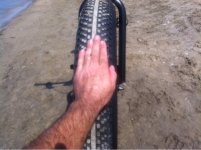webmonkey8
10 µW
- Joined
- Aug 14, 2015
- Messages
- 6
What do you guys recommend for Winter commuting? A Fatbike with the Bafang BBS02 mid drive motor? Or a mountain bike with front suspension fork with the same motor? I'd imagine the second option would be cheaper, correct?
My 3 option details:
- The Biktrix Juggernaut (http://www.biktrix.com/juggernaut.html)
- A regular fat bike for around $1000 and strapping the Bafang BBS02
- Mountain bike with front suspension fork and winter studded tires with the Bafang BBS02
We get snow in my area during the Winter months. However, I'm not going to be going on any singletrack, etc. My commute to/from work consists of mainly bike trails that are plowed (most of the time) in the Winter time, as well as service roads.
Any opinions? Pros and Cons?
Please advise.
My 3 option details:
- The Biktrix Juggernaut (http://www.biktrix.com/juggernaut.html)
- A regular fat bike for around $1000 and strapping the Bafang BBS02
- Mountain bike with front suspension fork and winter studded tires with the Bafang BBS02
We get snow in my area during the Winter months. However, I'm not going to be going on any singletrack, etc. My commute to/from work consists of mainly bike trails that are plowed (most of the time) in the Winter time, as well as service roads.
Any opinions? Pros and Cons?
Please advise.












